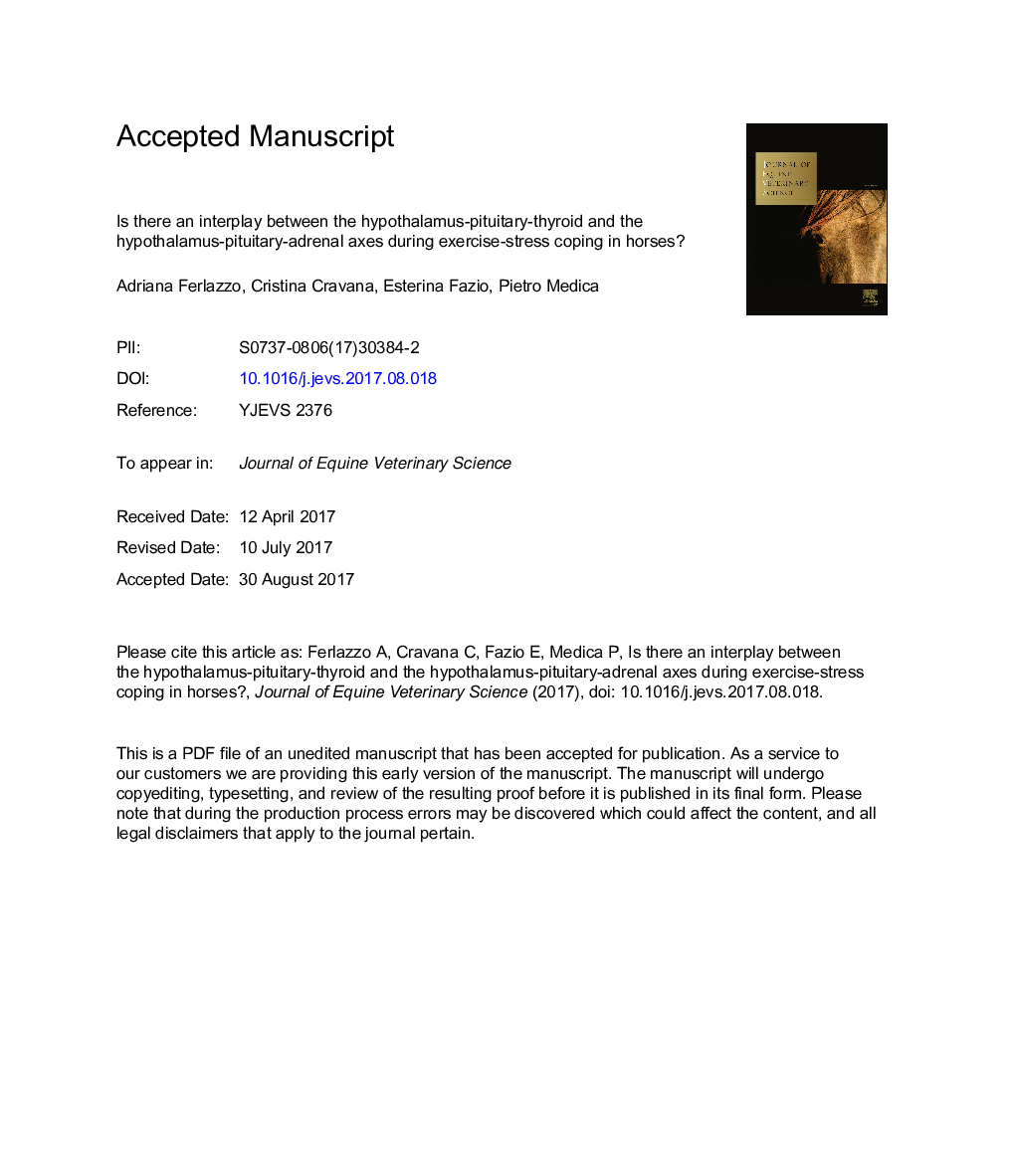| کد مقاله | کد نشریه | سال انتشار | مقاله انگلیسی | نسخه تمام متن |
|---|---|---|---|---|
| 8483191 | 1551538 | 2018 | 43 صفحه PDF | دانلود رایگان |
عنوان انگلیسی مقاله ISI
Is There an Interplay Between the Hypothalamus-Pituitary-Thyroid and the Hypothalamus-Pituitary-Adrenal Axes During Exercise-Stress Coping in Horses?
ترجمه فارسی عنوان
آیا بین هیپوتالاموس-هیپوفیز-تیروئید و محور هیپوتالاموس-هیپوفیز-آدرنال در طول تمرین استرس در اسب وجود دارد؟
دانلود مقاله + سفارش ترجمه
دانلود مقاله ISI انگلیسی
رایگان برای ایرانیان
کلمات کلیدی
فعالیت ورزشی رقابتی و غیر رقابتی، استرس ورزش، اسب، محور هیپوتالاموس-هیپوفیز-آدرنال، محور هیپوتالاموس-هیپوفیز-تیروئید، یودوتییرنین کل و آزاد،
موضوعات مرتبط
علوم زیستی و بیوفناوری
علوم کشاورزی و بیولوژیک
علوم دامی و جانورشناسی
چکیده انگلیسی
This review highlights the response of equine circulating total and free iodothyronines to exercise, as a peculiar stress model, during different competitive and noncompetitive sport activities. The interplay with the hypothalamus-pituitary-adrenal (HPA) axis, using cortisol as modulator of physical and/or mental exercise demands, is regarded in terms of coping with energy homeostasis and interfering effects of stress on performance. Triiodothyronine (T3) and free iodothyronines (fT3 and fT4) respond to exercise stress, showing specific patterns according to type and workload of exercise, as well as to environmental conditions. A dependence of T3 and fT3 changes on exercise-related variables (fence height and performance success) can be shown. General increases of T3 and significant positive correlations between cortisol and T3 changes have been recorded in sport activities requiring frequent transitions from anaerobic to aerobic metabolism for energy recruitment and specific motor abilities (show jumping, western riding events, gymkhana, trekking). During competition, significant decreases have been observed concerning T3, fT3, and fT4, in jumpers, Standardbreds, and Thoroughbreds. In jumpers, negative correlations between β-endorphin and T3 or fT3 changes were found, while during noncompetitive show jumping, negative correlations were recorded between T4 and adrenocorticotropin or β-endorphin changes. The influence of mental and emotional components of exercise stress could be supposed by considering repetitive physical activities (training programs or hippotherapy). Thus, a contribution of iodothyronines to exercise-stress coping can be proposed, with a differentiated pattern according to different sport activities. An interplay of iodothyronines with HPA axis hormones could be also suggested.
ناشر
Database: Elsevier - ScienceDirect (ساینس دایرکت)
Journal: Journal of Equine Veterinary Science - Volume 62, March 2018, Pages 85-97
Journal: Journal of Equine Veterinary Science - Volume 62, March 2018, Pages 85-97
نویسندگان
Adriana Ferlazzo, Cristina Cravana, Esterina Fazio, Pietro Medica,
